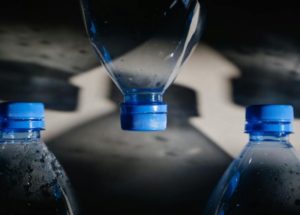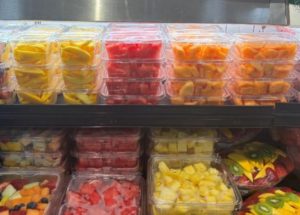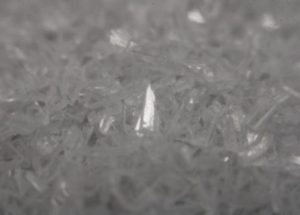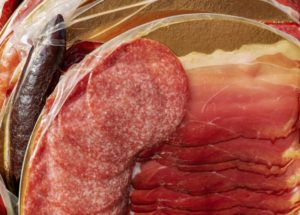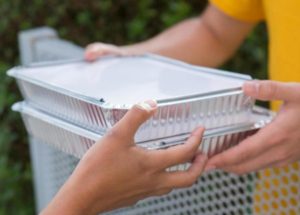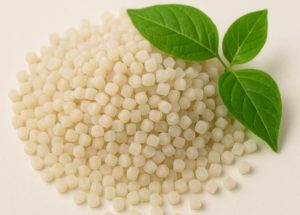Jun 20, 2025
Do PET Post-Consumer Recycled Materials Contain PFAS? What Our Testing Revealed
At a Glance Post-consumer recycled content can be PFAS‑free — lab tests on PET with 10–100% PCR showed no detectable PFAS, easing health concerns. PFAS fears may be overstated, as contamination didn’t appear despite theoretical worries. Ongoing testing and supplier checks are key to maintaining safety as recycling processes evolve. Sustainable + safe = possible […]
Read More +
Jun 16, 2025
Molded Fiber Food Containers: Promise or Problem?
At a Glance Molded fiber food containers offer compostable benefits, but often need barrier coatings that may include PFAS or plastic. They lack clarity and durability, making them better for quick-turn items than long shelf-life products. Production is slower and more expensive than plastic due to complex forming and drying steps. Innovation is underway, but […]
Read More +
Jun 13, 2025
Do You Know How Quality Plastic Packaging Reduces Food Waste?
At a Glance Quality packaging fights food waste in America by extending freshness and preventing spoilage through barrier protection and smart design. Sealing, portion control, and durability cut down on damage and over-consumption. Lightweight plastic reduces transport losses, lowering breakage and carbon impact versus heavy packaging. Investing in packaging pays off, balancing cost and sustainability […]
Read More +
Jun 11, 2025
The Reality of Post-Consumer Recycled Materials in Plastic Packaging
At a Glance Post-consumer recycled materials vary in quality, depending on source, sorting, and contamination — real-world PCR isn’t always consistent. PCR adds color/odor challenges, meaning branding, clarity, and food safety must be carefully managed. Regulatory compliance is non-negotiable, requiring PCR materials to meet FDA/food-contact standards before use. Transparent testing and supplier partnerships are essential […]
Read More +
Jun 09, 2025
Trust at First Sight: The Strategic Value of Consumer Confidence Through Tamper-Protected Food Packaging
At a Glance Tamper-protected food packaging builds consumer trust, signaling safety and care from shelf to home. Clear tamper evidence deters theft and tampering, keeping products intact and brands protected. Implementation costs and design impact usability, so balance security with consumer friendliness. Success hinges on seamless integration — educate consumers, streamline production, and ensure reliable […]
Read More +
Jun 02, 2025
The Way Nitrogen Affects Food Freshness May Surprise You
At a Glance Nitrogen flushing extends freshness by replacing oxygen in packages — slowing browning in produce and oxidation in meats and cheeses. Fresh produce gets a head start: reducing oxygen to 5–8% right away helps maintain color and quality. High-barrier packaging and MAP work for proteins: aiming for near-zero oxygen to preserve flavor and […]
Read More +
May 30, 2025
How Controlling Fruit Purge Can Save Your Fresh-Cut Products Today
At a Glance Fruit purge control is essential — managing expelled juices prevents soggy packaging, microbial growth, and product damage. Drainage systems (pads, trays, mesh) wick away excess liquid, keeping fruit fresh and appealing. Modified atmosphere packaging (MAP) reduces respiration and purge by adjusting gas levels around the fruit. Temperature control and rapid sealing are […]
Read More +
May 23, 2025
Sealed to Perfection: The Hidden Science of Meat Packaging
At a Glance Meat packaging impacts freshness, safety, and visual appeal, using film sealing, vacuum, and modified atmosphere methods to protect quality. Different meats need different solutions — like high-OTR films for fresh fish and controlled gas blends for red meat. Lighting affects both appearance and shelf life, so retailers balance visibility with color preservation. […]
Read More +
May 19, 2025
Aluminum vs. Plastic Packaging: Pros, Cons, and Real-World Considerations
At a Glance Aluminum and plastic both have unique strengths — aluminum offers high barrier protection and recyclability, while plastics excel in light weight and design flexibility. Plastics typically have a lower carbon footprint during production and transport due to their lighter mass. Aluminum wins on reuse and infinite recyclability, but can require more energy […]
Read More +
May 16, 2025
Is PEF the Future of Fresh Food Packaging?
At a Glance PEF food packaging delivers superior barrier properties — it blocks gases and moisture better than PET, extending shelf life. It’s fully bio-based and recyclable, offering a more sustainable alternative to fossil-fuel plastics. Adoption challenges include costs and supply, but pilot projects show real-world promise. PEF fits brand goals for freshness and sustainability, […]
Read More +

